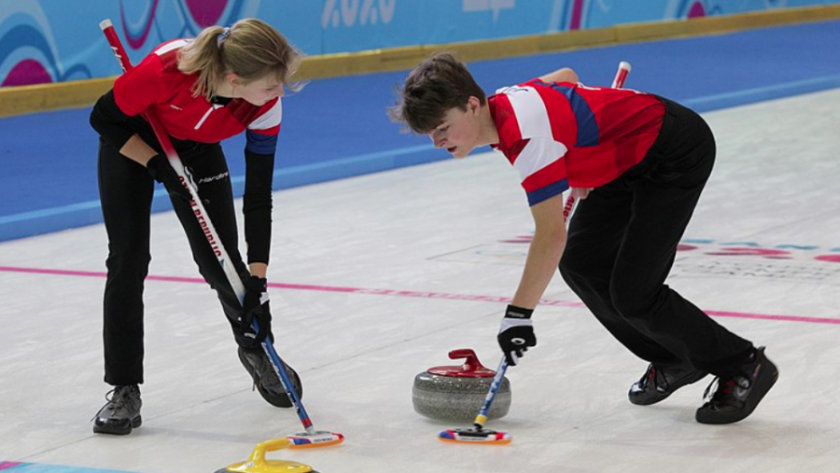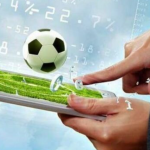In the ice-based team sport of curling, two teams alternate sliding granite stones in the direction of a goal known as a House. It is a winter Olympic and Paralympic sport that features medal divisions for mixed wheelchair teams, men’s, women’s, and mixed doubles teams.
The mixed doubles version of the sport features teams of two players, one male and one female, as opposed to the traditional curling teams of four players. Teams in wheelchair curling, women’s curling, and men’s curling may also contain a fifth player, known as the Alternate. Each team elects a Skip and Vice-Skip to serve as team captains.
The skip’s job is to direct the team’s play, and you can find them standing in the house at the scoring end of the score sheet. When the skip is delivering the team’s stones, the vice-skip assumes the skip’s responsibilities.
In team curling, each player alternates with an opponent while delivering two stones in a row in each End, or round. At World Curling competitions, each team uses a set of eight stones that all have the same handle color—red or yellow.
Common names for the playing positions include Lead, Second, Third, and Fourth. The person who throws the first two stones is in the lead. The third and fourth stones are played by the second. The fourth plays the final two stones, while the third plays the fifth and sixth. It’s customary for skips to play fourth, but it’s not necessary.
Each team plays five stones in mixed doubles. Every end starts with one stone already in place for each team, allowing for a total of six points each end. While the opposing player plays stones 2, 3, and 4, the first and fifth stones are played by the first player.
The playing surface is a curling rink
A very long sheet of specially prepared ice is used to play curling.
A curling ice sheet can be up to five meters broad and over 45 meters long. Two circles that resemble targets are located at each end of the sheet and are referred to as homes. There are four rings in each house, which help determine which curling stones are closest to the button (center).
Basic game mechanics and scoring
For each of its own stones that are within or touching the house and are closer to the center than any stone from the other team, a team receives one point. In an end, only one team may score. No points are awarded at the conclusion of an end if no team’s stones are in contact with the house. We refer to this as a blank end.
Each team transfers a stone from the Hack at one end of the sheet to the house at the other, taking turns doing so. To be considered in play, the stone must be released by the players prior to the Hog Line.
The players themselves determine the score after all stones have been transported to the scoring end of the sheet.
Curling is typically played over ten ends, but in some tournaments and styles this may be shortened to eight ends. The competition’s regulations allow teams to finish their game before the specified amount of ends. At this moment, the game is won by the team with the most points.
Final stone drawn
Teams choose who will have the Hammer or Last Stone Advantage before the game of curling starts. In championship curling, this is settled by a draw to the button, in which two players from each side throw a stone, one clockwise and the other counterclockwise, as near as they can to the center of the house. The distance from the stone to the center is then measured. The Last Stone Draw, or LSD, is the name of this procedure.
If a team holds the last stone advantage, it implies they can deliver the end’s final stone and have the chance to win that end by scoring at least one point. Once a team scores, the other team receives the hammer for the following end and gains the benefit of having the last stone.
In order to ensure that no stones are left in the house after the final stone is played, teams that typically aim to score more than one point every end will occasionally blank an end. Thus, they are entitled to keep the hammer for the following purpose. In mixed doubles, however, a blank end also results in the passing of the hammer to the opposite side.
Energy Play
Teams in mixed doubles are permitted to employ a power play once per match. The team that makes the decision on the placement of the “positioned” stones must initiate the power play at the start of an end in order to use it.
Playing time
A championship curling match might last up to three hours on average. Depending on the discipline and number of ends being played, teams are allotted a certain period of Thinking Time. Each team has 38 minutes to think during regular ten-end games. For eight-end games, this is lowered to thirty minutes. Teams in wheelchair curling are given 38 minutes to prepare for a game of eight ends, while mixed doubles teams are given 22 minutes.
Equipment
You need a set of stones to play the game of curling. They weigh over 20 kg each and are constructed from a unique variety of granite.
Each curler is provided with a brush and a set of special curling shoes called Sliders, which have one sole that grips the ice and one slippery sole for sliding with a stone during delivery. A gripper is a detachable rubber sole designed to safeguard the slider, keep it clean, and provide stability for the curler on the ice.
Shots
Curling shots can be classified as Guard, Draw, or Take-out, however there are numerous versions of each.
To defend the stones within the house, guards are placed in the Free Guard Zone, which is the area between the hog line and the house.
Draws are shots that are fired to gain ground and create a scoring opportunity.
Stones are taken out of play by shots known as take-outs.
A stone will curl across the ice sheet when it is moving. Players will rotate a stone either clockwise or counterclockwise when delivering it. Players can have more control over where the stone rests by applying a spin and making the stone curl on the pebbled ice.
Sweeping
Sweeping is intended to gradually thaw the ice’s surface so that the stone may glide across it. You need to sweep the ice with downward force in order to do this.
The stone’s route can be extended by sweeping. A stone can move two or three meters further with good sweeping. Additionally, sweeping might make the stone’s trajectory straighter and its curl less pronounced.
Shouting
Players may frequently be heard yelling, “Hurry! Hard! ”. Because the curling ice is so long, players frequently shout at one another to communicate. Some teams, meanwhile, prefer to employ a set of hand signals that have been created specifically for the game to communicate instead of shouting.
Curling in a wheelchair
For people who are unable to walk or can only walk short distances, wheelchair curling is an option. This comprises athletes who need wheelchairs for transportation and have major limitations in lower limb/gait function due to conditions including spinal damage, cerebral palsy, multiple sclerosis, or leg amputation.
Wheelchair curling is a mixed-team sport, so both male and female players must be on each team. There is no sweeping, but the distribution of the stones might be facilitated by the use of delivery sticks.




